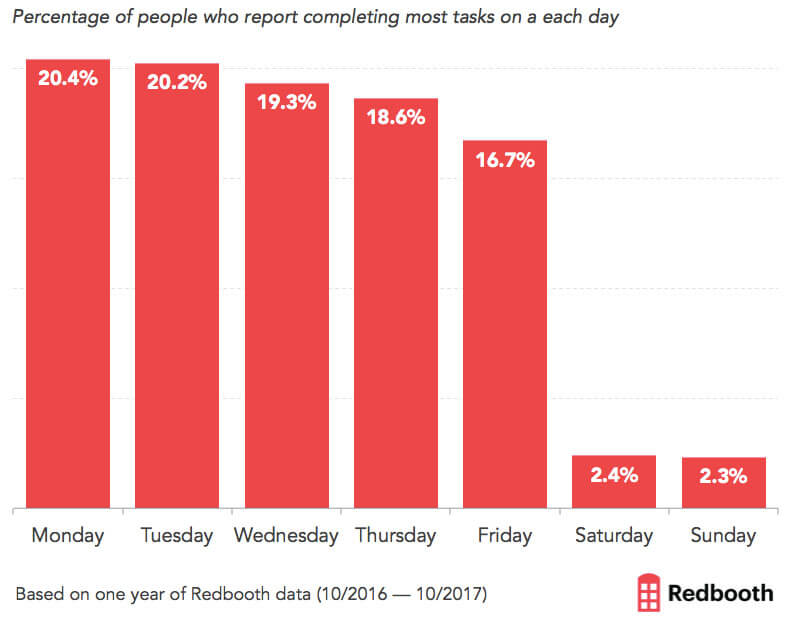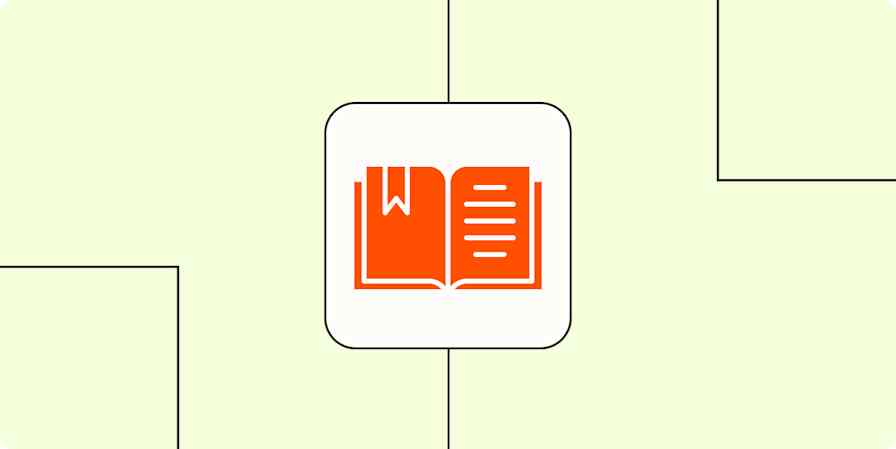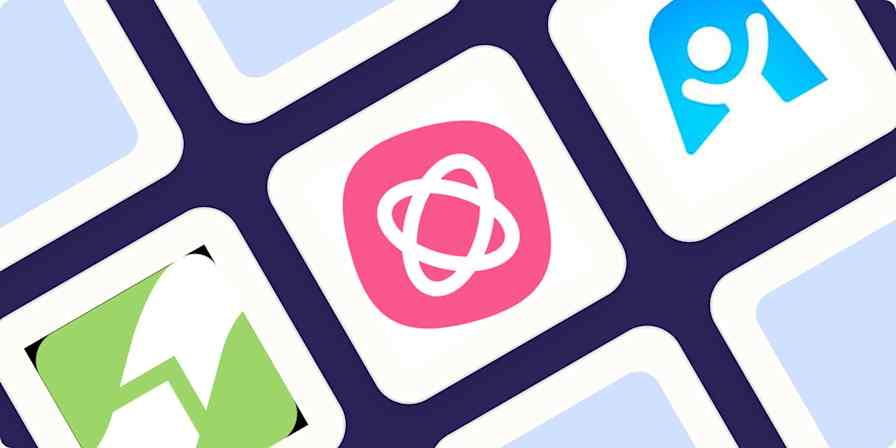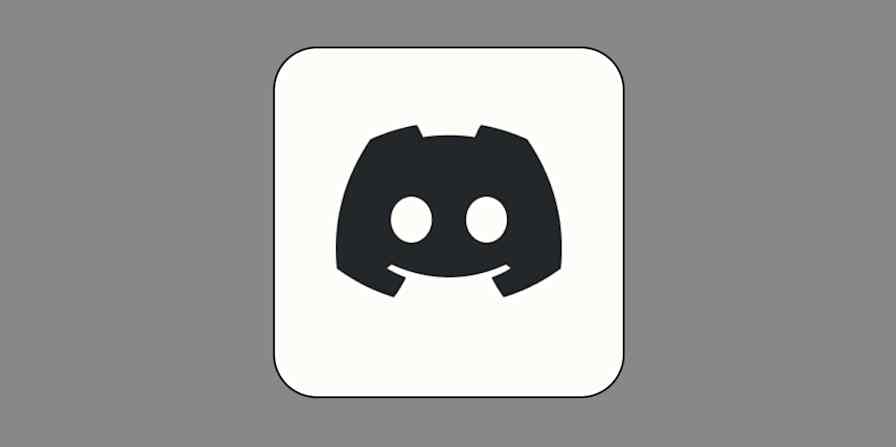It's Monday. You're well-rested from the weekend, having had a much-needed break and quality time with your family and doggos. You're crossing off your to-do list at warp speed, getting things done quicker than you expected, and thriving off that Monday energy.
Then Tuesday comes, and you get less done. Maybe tomorrow will be different? But by Wednesday, your brain feels a little rusty. Thursday slips by like sand. It's Friday, and you're panicking about all you planned to accomplish this week but didn't. Your to-do list, week by week, looks something like this:

Sound familiar?
Front-load your weeks to squeeze every bit of juice from the Monday energy
At the beginning of 2022, I read about the productivity method of front-loading your weeks via Steph Smith. The gist: you work the most on Monday and gradually decrease your working hours until Friday, when you work the least. So, if you're working 40 hours a week, instead of working the standard eight hours a day, you'd work 12-10-8-6-4 hours from Monday to Friday. It's like using the famous Eat That Frog method at scale.
I've been front-loading my weeks for three months (fourth running!). The results?
I'm less stressed by the end of the week because I've already accomplished all my important tasks early on.
I only have to work a few hours on Fridays before I kick back for the weekend.
I can use my start-of-the-week energy to its fullest and get more done than I otherwise would have.
But you don't have to take my word for it—there's evidence to back up why front-loading your weeks work so well. In a study by Redbooth, 20.4% of respondents said they completed the most tasks on Mondays. Only 16.7% reported Fridays as their most productive day.

The data is consistent across studies and industries: recent research by Moneypenny and Accountemps found similar Monday-favorable results. The reason? Experts cite multiple factors:
You come back after a two-day rest and have more energy to tackle tasks.
Willpower and focus—both are higher at the beginning of the workweek.
A disengagement from work during the weekend gives you a fresher perspective on Monday, boosting creativity and productivity.
Front-loading your weeks works. But before you dive in, let me tell you more about my experience in the past quarter: what worked, things I tweaked, and mistakes I made (so you don't have to).
Try a semi-weekend Wednesday
Working more on Mondays and Tuesdays came pretty easily to me—I already had enough energy; I just needed to use it well. But I found it hard to do heavy-lifting work on Wednesdays after working so many hours in the first two days of the week.
Eventually, I assigned Wednesdays to do non-brainy stuff, even if it meant working fewer hours on Wednesdays and more hours on Thursdays. Having Wednesdays as a semi-off day allowed me to have a break in the middle of the week and come back fresher on Thursday.
Many people shared my experience when I talked about the front-loading method on Twitter. For example, Aiza takes Wednesdays as a pause or learning day and also catches up on groceries.
I do this! I work a lot on Mon/Tues and then “laze off” into Friday. Wed is like my pause/learning day. We do groceries too.
— 𝙰𝚒𝚣𝚊 𝙲. ⚡️ (@aizanity) March 20, 2022
Christine, on the other hand, does minimal work on Wednesdays or takes the day off completely. This kind of Weekend Wednesday is another amazing productivity method. Take Wednesdays off instead of Saturdays. Or you can take it a step further and take Wednesdays off along with Saturday and Sunday—a unique iteration of the four-day workweek.
Practice trial-and-error to find a rhythm that works the best for you. Maybe you notice your energy tapers off by Thursday, and you find it best to work on low-energy tasks that day. Perhaps you need your Tuesdays lighter after a heavy Monday. And it might change from week to week—that's ok. Keep adapting to whatever work style suits you best.
Schedule non-work activities on Thursdays and Fridays
One of the biggest hurdles I faced was the guilt of "not doing enough" later in the week. I kept thinking: You have the time. Why not get ahead on next week? It was easy to slip into overworking because I saw the calendar empty, the evening free, and others working their regular 9-to-5 hours.
I combated this by proactively scheduling non-work-related activities on Thursday evenings and Friday afternoons: watching movies with friends, doing a poetry course, or cuddling up with a fiction book. It helped me avoid succumbing to the hustle culture mentality of doing more, more, more.

If you're thinking about experimenting with front-loading your weeks, I can't emphasize the importance of planning what you'll be doing with your free time on Thursdays and Fridays. If you don't, you'll likely end up working more or doing a whole lot of doomscrolling.
Be strategic
In the initial days of front-loading my weeks, I assumed I could accomplish twice as many tasks on Mondays and Tuesdays than I could in my five-hour workday. But I quickly ran out of steam. Despite working for ten hours on Monday, my to-do list had undone items. I realized front-loading your weeks has to be more strategic than simply increasing the number of things on your to-do list. Why?
Things always take longer than you think they will (hello, planning fallacy). Solution: I started to add a one- or two-hour buffer every day on my to-do list to account for any miscalculations on how long something would take.
Even though I was working more on Mondays, my energy levels weren't the same throughout all those hours. I assigned all heavy-lifting tasks for Monday and Tuesday without considering I wouldn't have the same brainpower in the evenings. Solution: I started assigning a mixed bag of tasks on Mondays and Tuesdays—some requiring high concentration and some which aren't so demanding. I'd front-load my days, too—working on challenging tasks in the morning and low-energy stuff later in the day.
Any week has unexpected tasks: a quick revision for a client, a forgotten admin task, or a long brainstorming session. I assumed having more hours would mean I'd have space to accommodate those jobs, but I was wrong. Solution: After working more than I planned a couple of times, I started accounting for the unplanned tasks and underestimated my to-do list accordingly.
Work smarter, not harder (and customize!)
If you have the work and life flexibility to set up your own schedule, I'd recommend giving this method a try. But remember: customize it to fit your life and working style.
Maybe, like Steph Smith, you prefer working 12 hours on both Mondays and Tuesdays, so you can have a two-hour workday on Friday.
Perhaps you know Monday isn't your best day, so you do an easy slide, go high in the middle, and do an easy out. Instead of working 12-10-8-6-4, you'd work 6-12-10-8-4.
Maybe it isn't about the hours for you at all. You can aim to complete your most high-priority tasks at the beginning of the workweek—regardless of how long it takes—and do only admin stuff on Thursdays and Fridays.
Tailor-make your schedule to enable you to use your mental peaks to their fullest—regardless of the rulebook.









